Senate approves new national monument at edge of Las Vegas
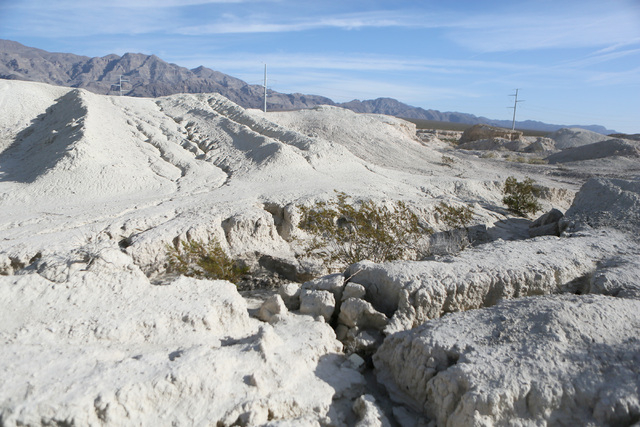
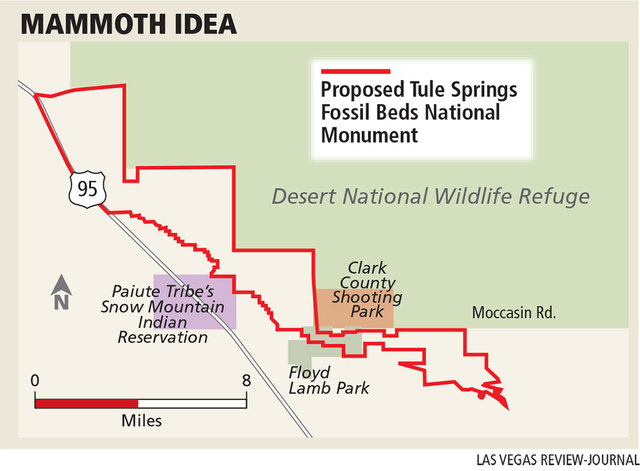

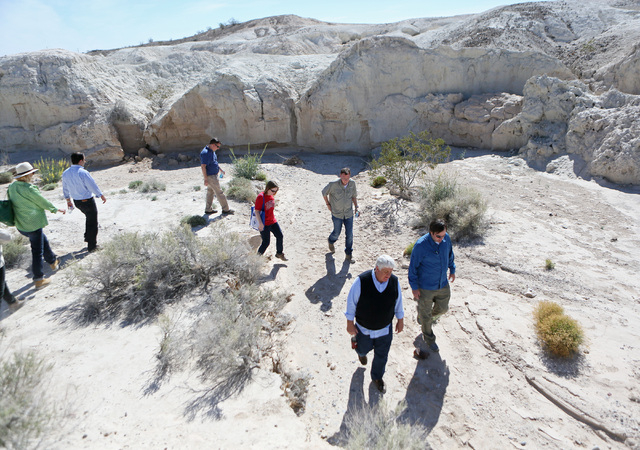
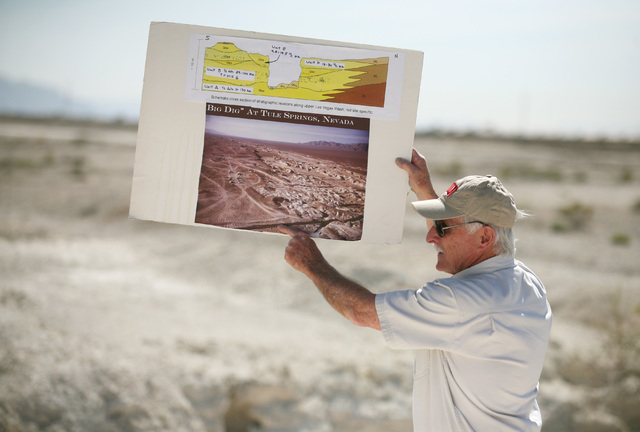

WASHINGTON — An ice age boneyard at the northern edge of the Las Vegas Valley is now one signature away from becoming Nevada’s newest federally recognized natural landmark.
The Senate on Friday completed the work of Congress to create the Tule Springs Fossil Beds National Monument. Once the legislation is signed into law by President Barack Obama, the 22,650-acre tract prized for its trove of prehistoric relics will fall under the government’s preservation umbrella as a unit of the national park system.
“There’s still tears just talking about it,” said an emotional Jill DeStefano, president of the Protectors of Tule Springs, a small volunteer group formed to keep the fossil beds from being trashed or covered by homes. “It’s been eight years — thousands of hours I can’t count, and thousands of hours by other volunteers.”
The area once considered for sale to home builders is prized by scientists because it contains a wealth of fossils from a vast cross-section of time, allowing researchers to study climate change and its impact on animals through the past quarter million years or so.
“It’s in the upper Las Vegas Wash where the whole story is laid out,” said paleontologist Eric Scott from the San Bernardino County Museum in Redlands, Calif.
The chalky hills along the wash have yielded evidence of an extinct ice age menagerie that includes mammoths, horses, camels, bison, North American lions and ground sloths the size of grizzly bears.
In 2012 alone, Scott and company found a fossil from a saber-tooth cat while researchers from UNLV collected a bone from a dire wolf, the first discovery of its kind in Nevada.
The latest find, confirmed by the San Bernardino museum team earlier this year, is the first definitive proof of a North American llama at Tule Springs.
Scott said more fossils are eroding out of the hills every day and likely will be for generations to come. Designating the area as a national monument should help ensure future discoveries by scientists who haven’t been born yet.
“It’s not just the fossils we’ve found. It’s the fossils that are still out there and the geological context in which they’re found,” he said. “The fossil potential is staggering.”
The national monument designation, which is reserved for sites of historical or scientific interest, is the centerpiece of eight Nevada public lands measures — and close to 100 natural resource projects in other states — that were rolled into an annual must-pass national defense policy bill.
The legislation approved Friday makes other significant changes to the Nevada map, creating new wilderness areas in Lyon and Humboldt counties, carving out land for a new UNLV campus in North Las Vegas, and opening thousands of acres for economic development around the state.
The Tule Springs portion of the bill had bipartisan backing from Nevada’s congressional delegation and enthusiastic support from a broad coalition of state and local government entities, conservationists and business leaders.
Bruce Spotleson, chairman of the Las Vegas Metro Chamber of Commerce, called it a “historic milestone.”
“Not only does this legislation preserve significant natural history and make it available for educational exploration, it also will expand opportunities for eco-tourism, economic development, higher education, all important to job creation and our economy,” he said in a prepared statement.
Getting the legislation through the Senate marked one of the last acts of Harry Reid’s long tenure as majority leader.
“I am proud to have worked with such a diverse set of people in my state to pass legislation that both protects some of our most spectacular places and strengthens our state’s economy,” Reid said in a written statement. “Our public lands are part of who we are in Nevada — and the diversity of our lands reflects the diversity of our identities.”
Friday’s passage also represented a parting victory for Rep. Steven Horsford, D-Nev., who sponsored the Tule Springs lands bill before losing his re-election bid. When the measure cleared the House last week as part of the National Defense Authorization Act, Horsford called it “a good day for Nevada and those who believe we can still do big things for our state.”
So how long before the new monument opens to the general public?
“That’s a good question,” said Alan O’Neill, a retired National Park Service administrator who now works as an advocate for trails, public lands and eco-tourism. “There should be a way to provide some minimal access … while still protecting the resource.
“You don’t want to wait years for the public to have access.”
Right now, DeStefano said, the area is fenced and closed to vehicles but “anybody can walk out there,” so long as you don’t disturb or remove anything you might find.
The sawtooth-shaped patch of desert is bordered by the cities of Las Vegas and North Las Vegas, unincorporated Clark County, the Las Vegas Paiute Indian Reservation and the Desert National Wildlife Refuge.
Among the first things that will happen once the legislation becomes law is the appointment by the National Park Service of an interim superintendent for the monument. The legislation also calls for the creation of an advisory council to shape the development of Tule Springs.
Lynn Davis, senior Nevada program manager for the National Parks Conservation Association, said the council could be assembled in as little as a few months. “I think you’re going to see things happen quickly,” at least by government standards, she said.
Based on the diverse group that advocated on behalf of the monument, Davis said she expects to see a vibrant and creative planning process — one sure to benefit from the park’s close proximity to a city that knows a thing or two about attracting visitors.
If done right, O’Neill said, Tule Springs could become “the new model for building an urban national park.”
One obvious partnership is with the schools, which could use the monument as a “living laboratory” to bolster local high school and college geoscience programs, he said. Perhaps one day students at the new UNLV campus site included in the legislation will collect fossils from Tule Springs and walk them back to the university to examine them.
The possibilities are endless and exciting, especially to those who have been pushing to protect Tule Springs from the start.
But first things first, DeStefano said. “We’ve got to plan a party.”
Contact Stephens Washington Bureau Chief Steve Tetreault at stetreault@stephensmedia.com or 202-783-1760. Find him on Twitter: @STetreaultDC. Contact Henry Brean at hbrean@reviewjournal.com or 702-383-0350. Find him on Twitter: @RefriedBrean.
RELATED:
Tule Springs Fossil Beds bill clears House
Deal clears way for Tule Springs Fossil Bed National Monument
Negotiators: Land deal was swift and substantial
Nevada bills on the line as Congress heads to finish


















